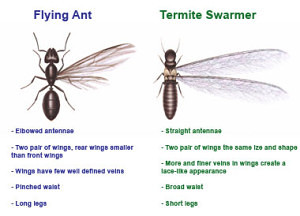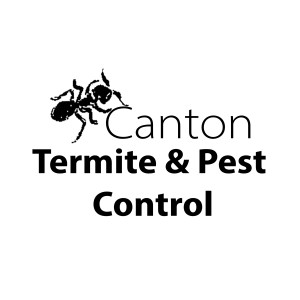Eastern Subterranean Termite Inspection and control
Subterranean termites are a species of termite that is the most widely seen in all of America. Higher concentrations of the subterranean termite population will be found in the southeast region, which of course includes Georgia. This article will provide you with beneficial information about the subterranean termite.

Subterranean termites will definitely be most active in warm weather, swarming in the spring or at any point in time where rain warms the soil and moistens it dramatically. They will continue to reproduce as long as they are not hibernating, which, if they are protected from extreme cold and other elements, may never occur. Termites devour anything containing cellulose, which ranges from wood to art canvases. The subterranean termite species causes BILLIONS of dollars in damage per year, and will affect more houses and other buildings in high-activity areas. According to the University of California’s Statewide Integrated Pest Management Program,
“Subterranean termites are common throughout California and can be found infesting fallen trees, stumps, or other dead wood in contact with the soil in the forest, landscape, or structural lumber in our houses. The species of economic importance are within the genera Reticulitermes, Heterotermes, and Coptotermes. Other genera of subterranean termites found in California are mostly restricted to the desert areas in the southeastern corner of the state and are generally not important pests.
The most common subterranean termites, Reticulitermes, can be encountered in nearly all regions of the state, from the sand dunes of the coast to the upper elevations of the mountain ranges and even in some of the desert areas. The species of Reticulitermes are the most destructive termites found in California. They are small in size compared to dampwood and drywood termites, but mature colonies can contain hundreds of thousands of individuals.
Reproductive winged forms of subterranean termites are dark brown to brownish-black with brownish-gray wings. On warm, sunny days following fall or spring rains, swarms of reproductives may be seen emerging en masse from their underground nests. Soldiers are wingless with light caramel-colored bodies and long, narrow amber-colored heads with no eyes. Workers are slightly smaller than reproductives, wingless, and have a shorter head than soldiers; their color is similar to that of soldiers.
In the Sonoran Desert of southeastern California, Heterotermes aureus is the most destructive species of subterranean termites. This species has light-brown winged forms that fly in the early evening and are attracted to lights. Another destructive species in this group, the Formosan subterranean termite, Coptotermes formosanus, is native to China but now established in California, thus far restricted to a small area near San Diego. Unlike the native Reticulitermes but similar to Heterotermes, Formosan subterranean termites swarm at dusk and are attracted to lights.
LIFE CYCLE
Termite colonies are self-perpetuating. When the colony is composed of a large number of individuals, often thousands, a small percentage of individuals develop into winged reproductives (alates or swarmers) that then leave the nest, flying in swarms to mate, disperse, and establish new colonies. Most of these reproductives perish during the flight due to predation by birds, lizards, ants, or other insects. The time of day and year when flights occur varies with species and geographic location. Reticulitermes species swarms during the afternoon in either spring or fall on clear days after a soaking rain. Heterotermes aureus flies in the late afternoon or early evening in July, August, and September. Coptotermes formosanus, although rare in California, flies in the late evening and is attracted to lights. In buildings with heated basements, termites occasionally fly inside during winter.
New kings and queens are winged during their early adult life and generally fly less than 100 meters from their colony. Once they land on the ground they find a mate and begin the search for a nest site. A colony begins when a mated pair constructs a small underground chamber, which they enter and seal. Soon afterward mating occurs and the female begins laying eggs.
Most species of termites have microscopic one-celled organisms, called protists, within their intestines that help in converting otherwise indigestible cellulose from wood into food for the colony. Both the king and queen feed the young on predigested food, thereby transferring these intestinal protists until the new brood is able to feed themselves. Once workers are produced, the king and queen are fed by them and cease feeding on wood.
Surprisingly, termites can be long lived; queens and kings can have a life span of a decade or more, while individual workers can live for one to several years.”
 If you have a need for a pest control professional to provide you with a free inspection, then call us at Canton Termite and Pest Control today with 770-479-1598! We provide service throughout Cherokee County Georgia and surrounding areas. Have a blessed day!
If you have a need for a pest control professional to provide you with a free inspection, then call us at Canton Termite and Pest Control today with 770-479-1598! We provide service throughout Cherokee County Georgia and surrounding areas. Have a blessed day!
By: Tim
